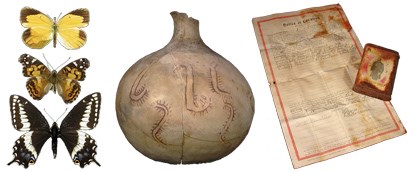
The Joshua Tree National Park museum collections document the cultural and natural resources of the park and the park’s efforts to manage those resources. The collections also illustrate the story of the park, its environment, and the people who have inhabited it. Park holdings include small collections of birds, mammals, reptiles, insects, and paleontological specimens; herbarium specimens; mining, homesteading, and prehistoric American Indian artifacts; administrative archives and photographs, and fine art. Significant collections include the William H. and Elizabeth C. Campbell archeological collections, historic photographs, and prehistoric ollas. The Campbell CollectionAs early California archeologists, Elizabeth C. and William H. Campbell revolutionized theories on early desert cultures and investigated archeological sites that, even today, have not been fully explored. The Campbell Collection consists of field notes, photographs, and over 65,000 lithic, ceramic, and organic artifacts collected during their wide-ranging investigations in southern California and southern Nevada from the 1920s to the 1940s. 
Pinto PointOne of the Campbells' most significant finds was sites associated with the Pinto Culture, dated at 4,000 to 8,000 years ago. The Pinto Culture is probably best represented by the Pinto point. 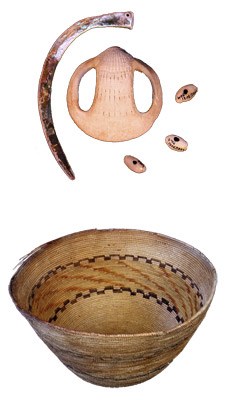
Indigenous CultureIndigenous groups occupied the area within the park's boundaries prior to the early 1900s. Archeological materials added to the collections from research investigations, including lithic tools, basketry, and ceramic objects, help to tell the story of early American Indian life. It is rare for an intact basket to be found in the park. Woodrats and other gnawing creatures usually destroy these items, however the burden basket pictured on this page was found overturned on an olla in a rock shelter in 1975. Cattlemen, Miners, and HomesteadersThe collections contain remnants of the park's history of cattle, hardrock mining, and homesteading in the late 1800s and early 1900s. Water and mining claims, tools, and children's toys tell the story of early Anglo settlement of the park. Few artifacts remain of the ranching era, except for several photographs and an early water location notice. After the California Gold Rush of 1849 ended, prospectors fanned out into the southern California deserts. An estimated 300 mines were developed in what is now the park. Hardrock mining tools, mining claims, historic photos, and personal items are represented in the collections. 
Gary Garrett The best known homesteading story is that of the Keys family and the Desert Queen Ranch. Material from the ranch highlights the hard work, ingenuity, and imagination required of a successful homesteading family, along with the products of daily life on an isolated homestead. Family photographs illustrate the ranch area and family activities. 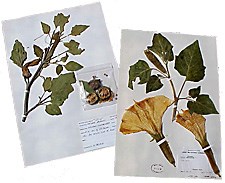
Botany, Wildlife, and InsectsThe park collections hold representative study specimens from the area's unique diversity of desert flora and fauna. As a consequence of encompassing the transition zone between the Mojave and Colorado deserts, vegetation types vary from desert scrub to Joshua tree woodland and pinon/juniper forest. The collections include 78 bird study skins, 1,309 insects, 57 mammals, 633 botany, and 25 reptile specimens. 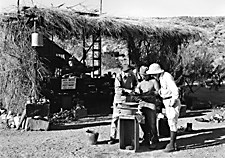
Archives, Photographs, and Library CollectionsOver 20 cubic feet of archives including land records, planning documentation, maps, oral history interviews, measured architectural drawings, and scientific research field notes document the park’s history. Field notes, photographs, and archival documents from the Campbells’ archeological work are also included. Photograph collections are comprised of historic photographs of the area, Keys family photo albums, and Stephen Willard fine-art prints. Some of the Joshua Tree National Park Historic Photo Collection is available on NP Gallery. Included in the research facility is a 6,000 volume research library encompassing cultural and natural resource information for the desert region. Research reports, oral history transcripts, desert studies volumes, National Park Service planning documents, video tapes, and newspaper and magazine articles are available for use. Accessing the CollectionsAccess is available to the collections for research that will provide public benefit and not harm the objects or documents. Loans of material may be made to institutions and agencies upon written request citing the nature of the need and the adequacy of facilities to care for the loaned material. The museum collections and research library are open to researchers by appointment, Monday through Friday, 8:00 a.m. to 3:30 p.m. Work space is available but limited. 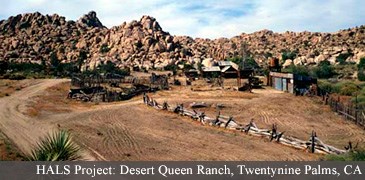
|
Last updated: January 29, 2024
